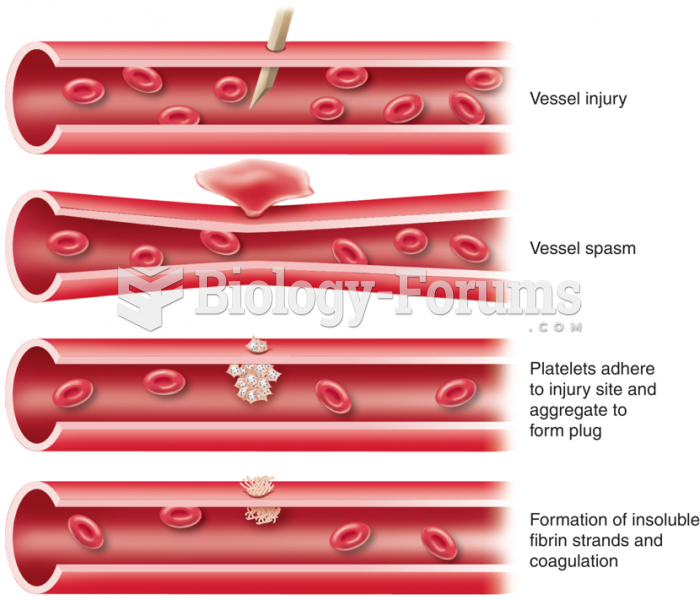|
|
|
In 1864, the first barbiturate (barbituric acid) was synthesized.
The heart is located in the center of the chest, with part of it tipped slightly so that it taps against the left side of the chest.
Green tea is able to stop the scent of garlic or onion from causing bad breath.
Over time, chronic hepatitis B virus and hepatitis C virus infections can progress to advanced liver disease, liver failure, and hepatocellular carcinoma. Unlike other forms, more than 80% of hepatitis C infections become chronic and lead to liver disease. When combined with hepatitis B, hepatitis C now accounts for 75% percent of all cases of liver disease around the world. Liver failure caused by hepatitis C is now leading cause of liver transplants in the United States.
Anti-aging claims should not ever be believed. There is no supplement, medication, or any other substance that has been proven to slow or stop the aging process.







